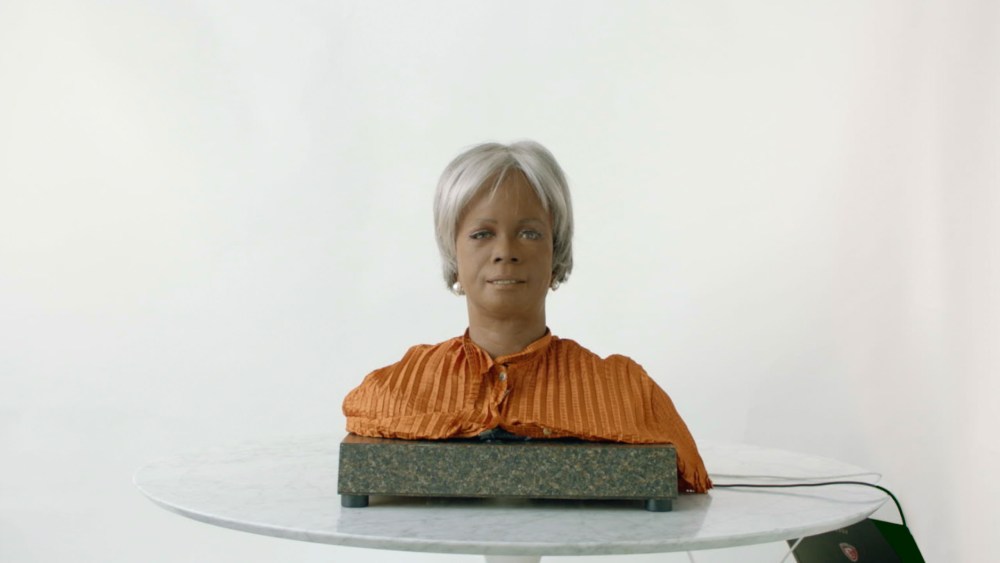A robotic sculpture featuring a face resembling that of a middle-aged woman and powered by ChatGPT technology, Bina48 stands out as a peculiar creation. Despite exuding an aura of intelligence, her responses still carry a mechanical undertone. Strikingly dissimilar to a human being in appearance, the creators assert that she represents an initial step towards overcoming mortality and achieving eternal life. In the Sundance documentary “Love Machina,” director Peter Sillen delves into the origins of Bina48, ultimately exposing the overconfidence of those responsible for her existence.
At the core of the narrative are Martine and Bina Rothblatt, a married couple who recount their journey of meeting and falling in love in an effort to unveil the depth of their bond. The concept behind Bina48’s development revolves around the notion of transferring their consciousness into the robot through what they term an “AI mind file.” Commencing with Bina Rothblatt as the foundation, they meticulously infused the sculpture with her perspectives on life gathered from numerous interviews conducted over several years. The objective was for the robot to emulate the thought processes and emotions of the original Bina as faithfully as possible.
The eerie nature of this endeavor is heightened by the candid revelations of the Rothblatts on screen. They portray their love story as an unparalleled romance, with Bina even endearingly referring to Martine as “a Binaphile.” This all-encompassing romance is envisioned to transcend the ultimate frontier for humanity: death. The couple has weathered significant challenges together, including caring for a terminally ill child who defied the odds and Martine’s gender transition in the 1990s. Their interracial relationship unfolds in a society marked by racial consciousness and often intolerance.
The documentary also sheds light on the couple’s formidable resources and unwavering determination to pursue this seemingly unattainable goal. Martine’s entrepreneurial success, notably as the creator of satellite radio among other achievements, provides the necessary means for their ambitious project. Yet, the question remains unanswered as to what distinguishes the Rothblatts’ love story as deserving of eternal preservation. The film subtly hints at the couple’s narcissistic tendencies, exacerbated by its reluctance to delve deeper into their relationship dynamics beyond the surface presented in family testimonials.
With AI and its implications for humanity’s future taking center stage in various sectors, from technology and business to entertainment, discussions around the subject have gained momentum. While the documentary primarily focuses on the narrative of Bina48 and the Rothblatts, it inadvertently crafts a positive portrayal of AI. Declarations of love abound, accompanied by insights from tech experts striving to bridge the gap between AI and human likeness. However, the film’s narrow focus limits its exploration of broader themes such as the religious and societal repercussions of eternal life.
Notably, the documentary captures artist Stephanie Dinkins’ attempt to engage with Bina48, revealing the limitations of the robot in comprehending the social and historical complexities of being a Black woman. This contrasting viewpoint challenges the superficiality of the Rothblatts’ aspirations. Sillen’s observational approach, complemented by T. Griffin’s subtle score, subtly critiques the subjects’ grandiose assertions.
What initially appears as a peculiar tale revolving around a talking sculpture evolves into a poignant reflection on unexamined lives. While Sillen’s original intent in narrating this tale remains ambiguous, he deserves recognition for unearthing captivating revelations. “Love Machina” may not offer groundbreaking insights into AI technology or Bina48 specifically that are not readily available online, but it does provide valuable commentary on human tendencies towards self-aggrandizement.










